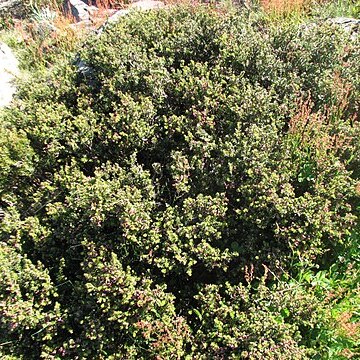Dioecious (rarely monoecious) shrubs usually to 4 m high, usually creeping or prostrate and spreading to 5 m across, densely branched. Resting leaf buds globular, 1–2 mm diam.; scales broadly triangular, imbricate. Adult leaves linear-oblong, sessile, 4–16 mm long, 1–2.5 mm wide, obtuse, sometimes apiculate; 1 resin duct present below vascular bundle; upper hypodermis interrupted. Male cones cylindrical, 4–7 mm long, 3–5 mm diam., in groups of (1–) 2–6 on axillary shoots 3–8 mm long; microsporophylls imbricate, triangular, obtuse. Female cones axillary, sessile or shortly pedunculate, with 1 ovule; mature receptacle red, fleshy, c. 3 mm long. Seed ovoid, 4–5 mm long.


